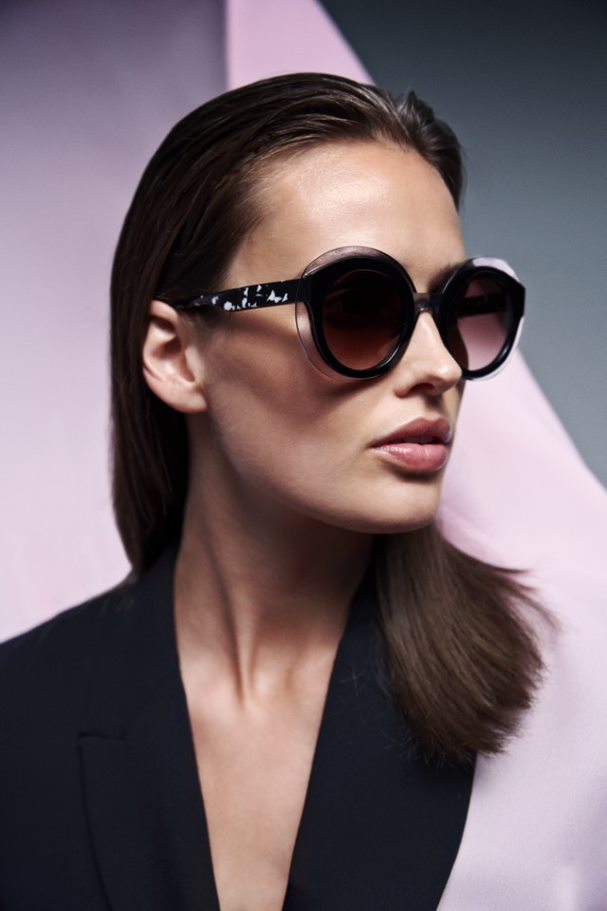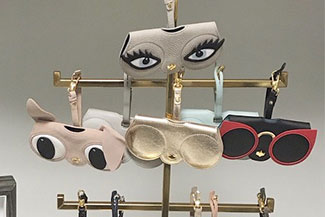Sunglasses
Whether or not you require vision correction, sunglasses can add an element of comfort and enhanced performance to your activities, while helping you look great.
Prescription Sunglasses
Even if you normally wear contact lenses and nonprescription sunglasses, there will be times when your contacts dry out or become uncomfortable, especially on the beach, where you battle the effects of sand, sun, wind, and water. Prescription sunglasses enable you to be outdoors all day without these discomfort problems or the hassle of dealing with your contacts.
A Better Solution For Driving
If you normally wear prescription eyeglasses, you face a dilemma when driving on sunny days. You can purchase “clip-on” sunglasses (or a modern magnetic version of them) for your eyeglasses. But these can sometimes scratch your lenses or can be difficult to put on without taking off your glasses – which can be dangerous when driving.
Another solution is to purchase one pair of prescription eyeglasses that have photochromic lenses – the kind that darkens automatically outdoors. The problem here is that these lenses often won’t darken properly inside a vehicle because some of the sun’s UV rays are blocked by your car or truck’s windshield glass.
For convenience and comfort, the best solution for seeing in the sun is prescription sunglasses. For easy access and so you don’t forget them, store them in your car or boat so they’re always there when you need them.
Many Lens Styles Available
Prescription sunglasses are available in a wide variety of lens materials and designs, including high index plastic and progressive (“no-line bifocal”) lenses. For boating, fishing and driving, polarized lenses offer superior glare protection from light reflecting off water and roadways.
If you plan on wearing your prescription sunglasses when playing sports, working with power tools or engaging in other activities that have the potential of causing eye injuries, choose lightweight lenses made of polycarbonate or Trivex. Lenses made of these materials are far more impact-resistant than glass or plastic sunglass lenses.
As with regular prescription eyeglasses, frame styles for prescription sunglasses are nearly unlimited. The only exception is that prescription sunglasses cannot be made in the same severe wraparound styles that some nonprescription sunglasses have. However, models with a lesser-curved wraparound style are available.

Nonprescription Sunglasses
Everyone should have a good pair of sunglasses. Whether you wear prescription eyeglasses or not, sunglasses are important for every age, race, and gender. While sunglasses may be considered a must-have fashion accessory, even more importantly, they play a critical role in protecting your eyes from UV (ultraviolet) and other harmful radiation from the sun. They also shield your eyes from wind, dust, and debris that could cause discomfort, dryness or damage.
Sunglasses should be worn in the winter as well as the summer and should be 100% UV blocking. This doesn’t mean that you have to pay a fortune for your shades. Even cheaper brands of sunglasses are made these days with full UV protection, so take the extra time to ensure you select ones that do offer full protection from the sun’s rays.

Prescription Sunglasses
Sunglasses are an important way to protect your eyes and ensure clear and comfortable vision when you are on the go. In addition to causing temporary vision loss, the sun’s bright rays can lead to long term eye damage. Ultraviolet radiation from the sun can also cause sunburns on the eyes and over time, can lead to diseases such as macular degeneration.
For those who wear prescription eyeglasses, sun protection is available in a number of options including prescription sunglasses, photochromic lenses or eyeglasses with clip-on sunglass lenses. The best solution depends on your personal preferences, comfort and which option fits in best with your lifestyle.






